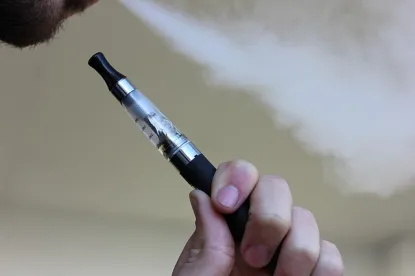Although the vaping company Juul has experienced significant fallout – both in terms of market value and public opinion – since information about their marketing tactics came out in 2019, vaping has yet to see a meaningful decline among teens, which rose a staggering 78% between 2018 and 2019 according to the American Cancer Society.
Juul has been identified as a catalyst for much of the current teen vaping habit, but teens have moved on from Juul pods to other products. According to Meredith Berkman, co-founder of the advocacy group Parents Against Vaping E-cigarettes (PAVE), “Juul is almost old school … It’s no longer the teen favorite.”
In response to lawsuits and public criticism, Juul pulled the majority of its flavored pods last October. However, Juul wasn’t the only flavored e-cigarette option by that point and the Juul alternatives are still available and popular among young users.
A partial federal ban on flavored products by the Trump administration in January of 2019 was intended to reduce this popularity among underage users. However, the ban left a number of loopholes, says Matt Myers of the Campaign for Tobacco-Free Kids.
A footnote in the ban allows for flavored e-cigarettes to still be sold as long as they are for non-refillable devices. Brands for these devices include NJOY, Puff Bars, and Posh.
Response to this loophole has been critical. “I was very surprised when I read the rule and saw that the F.D.A. had this footnote that does carve out a loophole,” said Kevin Schroth, a professor at Rutgers Center for Tobacco Studies. “These disposable, completely self-contained e-cigarettes like Puff Bar and others share all of the characteristics that made Juul a problem.”
However, it’s not entirely surprising to some. The industry has been successful at keeping the market for e-cigarettes active. Cristine Delnevo, who directs the Center for Tobacco Studies at Rutgers University comments, “It’s a bit of a game of whack-a-mole, so when policies are aimed at one product, another product pops-up to fill the void.”
The disposable vape pens are pre-charged, pre-filled devices that come in a wide range of flavors that are palatable to teens similar to what Juul used to make. Some brands have a higher nicotine level than Juul. And not only are these devices technically legal, they appeal to teens for other reasons, too: they are significantly cheaper than Juul.
Vaping with a Juul device can cost upwards of $40 to $50 for the vape plus four pods. On the other hand, a three pack of disposable vape pens costs only $20 and contains up to 300 puffs. For teens, it’s a more manageable price point. And because the disposable pens are smaller, they’re easier to hide and can be quickly tossed, helping teens avoid detection.
Manufacturers are increasing their production of disposable vape pens, according to numerous vape store owners who have noticed an increase in stock for these devices. Vapewerks owner Jeremy Gardner in Cumberland, Maryland poses the question: “How do disposables get a free pass when they’re essentially the same thing as a Juul or anything else that comes with a prefilled pod?”
“How do disposables get a free pass when they’re essentially the same thing as a Juul or anything else that comes with a prefilled pod?” he asked.
At this time, only Massachusetts has legislation that prohibits flavored disposable vape pens and imposes further limits on unflavored ones in an attempt to close the loophole in the federal ban. However, the FDA does have the discretion to crack down on new disposables and any e-cigarette product “targeted to minors.”



 />i
/>i


